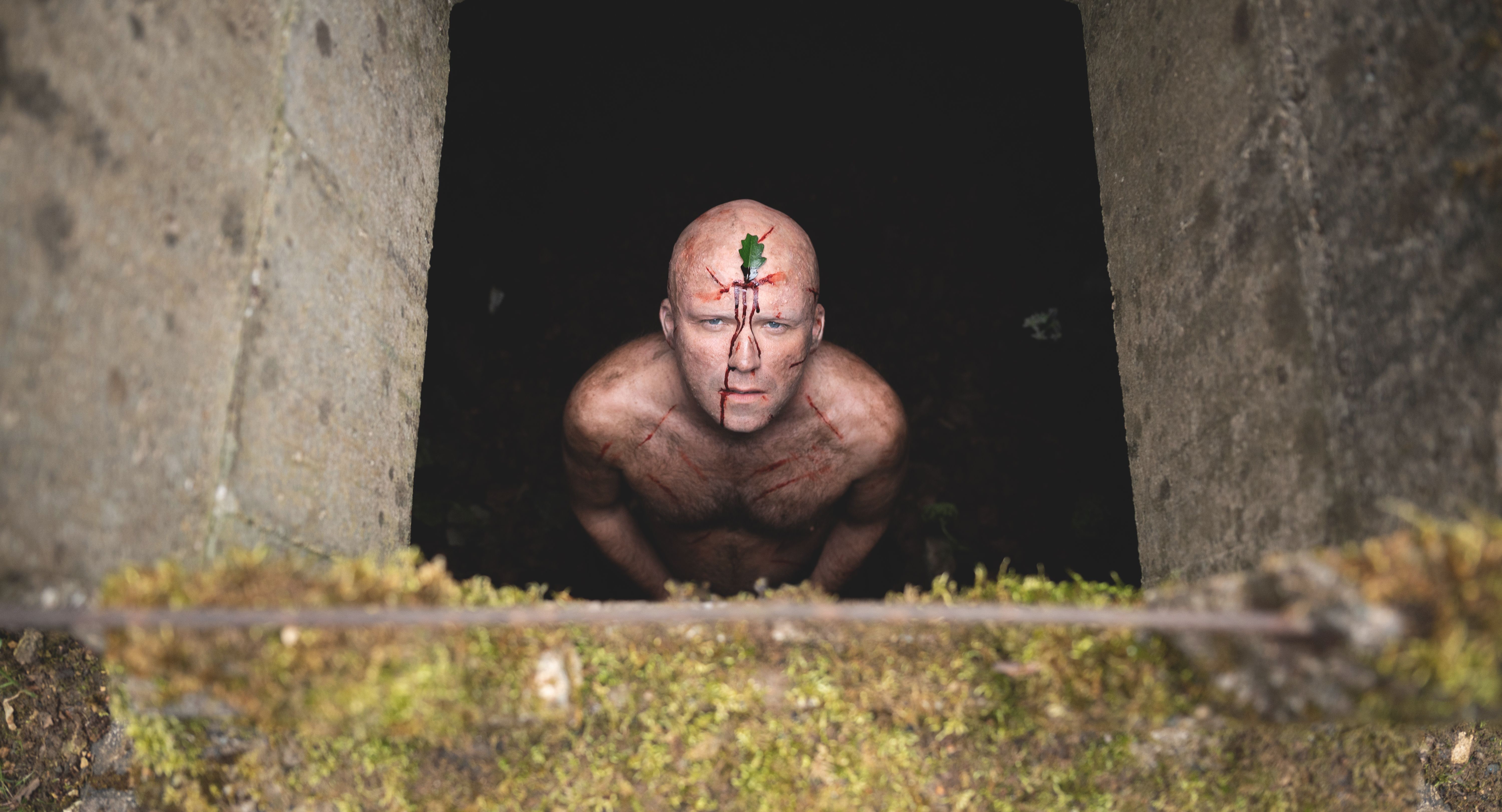Early in Alex Garland’s newest mind bender, Men, the film’s protagonist, Harper (Jessie Buckley), walks through a dark tunnel and sings a series of notes that echo off the walls, creating a repetitive melody. Though the melody briefly brings her comfort, her demeanor changes when the song seems to bring forward a shadowy figure from the tunnel’s other side. The association between the melody’s repetition and the unnerving figure is key to how the film excoriates structural misogyny.
Based on the film’s title alone, it should be unsurprising that Men thematizes misogyny. Deploying a variety of metaphors, the film makes the case that misogynistic behavior is horrific. For some, this may be a bit on the nose as far as elevated horror goes. Whether you like the film or not, though, it would be nearly impossible to leave a screening of the film without understanding the film’s message, which is certainly not true of many art-horror flicks. This is partly because of the film’s climactic— nearly indescribable — metaphor in which the various sexist male archetypes featured in the film repeatedly “give birth” to one another. Crucially, though, the film’s thematic success does not rest solely on this undeniably horrific visual. Rather, the film is expertly structured through various patterns of repetition that reflect the repetitive patterns that inform structural misogyny.
Men opens with a slow-motion shot of Harper (Jessie Buckley) looking out of a window as the man later revealed to be her husband, James (Paapa Essiedu), falls to his death. Quickly, the film then transitions into the present as Harper arrives at the country home where most of the film is set. As the primary narrative at the vacation house unfolds, the film repeatedly flashes back to the day of James’s death. Significantly, these flashbacks are not “properly” ordered linearly. Rather, the audience is given scattered glimpses of the altercation between Harper and James that precede his death and its aftermath. The repeated use of flashbacks reflects Harper’s mental state, in which glimpses of her traumatic experience make their way back to the forefront of her mind without warning. Because, as we learn, James abused Harper, she repeatedly grapples with the lingering consequences of misogyny at a psychological level. The narrative structure of temporal disruption and repetition thus reflects the traumatic consequences of misogyny.
Repetition also structures the progression of the plot, most notably through Harper’s initial introduction to each of the sexist archetypes, all played by Rory Kinnear. There is, of course, the obvious element of repetition here in that Harper repeatedly encounters misogynistic characters. This supports the film’s argument that women encounter misogyny on a routine basis. More significantly, though, is how so many of these encounters are shaped by the male characters encroaching on Harper’s privacy. When Harper is walking through the woods, she stumbles upon a decrepit building and is shocked to see a filthy, naked man standing outside. She leaves the scene, but the man follows her to her vacation home. Once inside, as Harper goes from room to room, the naked man peers through the windows, watching her every move. The unacceptable male behavior of the outside creeps into what should be her sanctuary.
Later, when Harper goes to a church, she privately screams in emotional agony. Suddenly, the vicar emerges and proceeds to ask her invasive questions. Harper cannot find sanctuary even in a literal sanctuary. She does not just have to repeatedly encounter misogyny; she must repeatedly deal with how misogyny presents itself at the cost of her privacy. The repeated invasions of privacy inflicted by Kinnear’s variants demonstrate the pervasive lack of safety women have in patriarchal culture.
Harper’s present-set narrative is not just interrupted by flashbacks, as the film often also cuts to associative shots of the nearby forest landscape. Importantly, many of these shots are not establishing shots for later scenes. Though they do visualize the forest outside Harper’s country house, they are removed from plot-based events. When they first appear in the film, these shots of nature seem to represent the sense of tranquility Harper hopes to achieve by being out of the city. However, their repetitive sameness, especially when contrasted against the increasingly suspenseful happenings of the plot, begins to create a sense of unease. Over time, the shots of nature feel increasingly unnatural, as if something is not right in the natural world. The film later confirms this sense of unease with a short series of shots of a decaying deer in the middle of the forest. We are suddenly confronted with the rotting effects of what we perceive as natural. The combination of the shot pattern and the image of the decomposing deer symbolizes the decay inherent in what we take for granted as natural. The film thus uses repetition to denaturalize misogynistic behavior.
The most exemplary use of repetition as a structuring device in the film appears in the unique way in which the film tethers the film’s content to its construction through music. Throughout the film, the melodic echoes Harper creates in the dark tunnel are repeated in the film’s score. Though this melody was intended to provide Harper with peace, it becomes an ominous musical force in the scenes with the highest degrees of tension. The film’s repetitive music device bleeds over from the diegesis into the non-diegetic, which poignantly symbolizes the diffuse nature of structural misogyny.
All the elements analyzed here lead up to the birthing climax, in which the misogynistic variants most explicitly demonstrate repetition’s significance in the patterns that inform structural misogyny. In this sustained sequence, each brand of sexism is passed from one male body to the next, all leading to the “birth” of Harper’s abusive husband, James. This conveys how the repetition of sexist behaviors repeatedly inform future brands of misogyny.
Though this scene is the most direct depiction of the horrors of misogyny, it would not yield nearly the same impact without the various repetition-based structuring devices that inform every other element of the film. Repetition is thus the key to Men’s unmistakable message.




